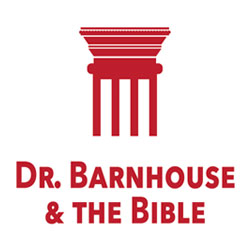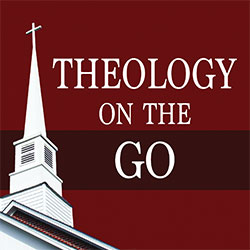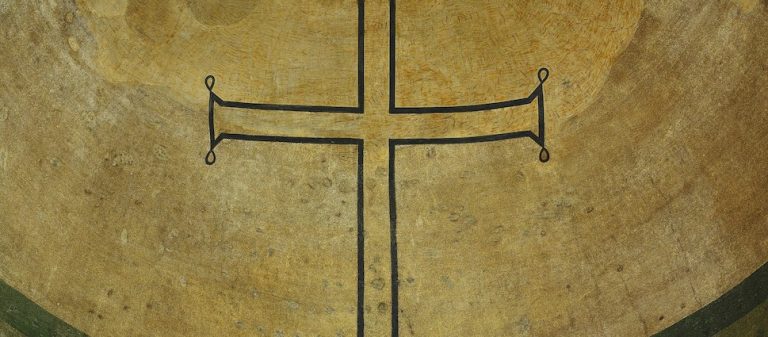
Is the Covenant of Works Still in Effect?
This is the third post in a series related to my new book on the theology of William Strong (ca. 1611–1654). In the previous posts we defined a “covenant of works” and determined that God did actually make such a covenant with Adam in the Garden. But is the covenant of works still in effect today?
The answer is yes and no. There is a sense in which the covenant of works is abolished for all, and there is a sense it is still in effect for many. The Puritans generally taught a two-fold abolition of the covenant of works. They said it was abolished at the Fall as a viable means to eternal life, as can be seen in the angel with the flaming sword. But it is abolished for individuals only at salvation, when the law’s condemnation is abolished. So, yes, it is abolished for all as to its viability as a covenant, but no, it is not abolished as to its terms and condemnation until a person is transferred out of it by faith in Christ.
Andrew Woolsey explains the view of the puritans in general on this:
Once broken, [the covenant of works] could never again offer the promise of life to those who had broken it. This applied to all mankind, since all had broken the first covenant in Adam as their head and representative. All God’s dealings with man were now under the covenant of grace. This did not mean that the covenant of works was abolished. It still stood in a condemnatory role, demanding the punishment of man in accordance with its original terms (Unity and Continuity in Covenantal Thought, 76).
John Flavel taught this, and he is just one example among many other Puritans who did so:
The broken covenant of works lost immediately all the blessings and privileges which before it contained, and retained only the curse and punishment; in token whereof, cherubims, with flaming swords, turning every way, were set up to keep the way of the tree of life, Gen. iii. 24 (“Vindiciae Legis et Foederis” in Works, 6:338)
William Strong speaks a lot of the continuing nature of the covenant of works. It is a major aspect of his book, and it crops up everywhere. But in chapter 1, he has four points in which he proves that it is clearly still in force. Here are his points with some short explanatory comments.
First, all people in every era die. The curse of the covenant did not fall on Adam alone, but on his posterity. “The curse comes upon all Mankind, therefore to them the duty did belong, and they are federates in this Covenant” (Strong, Discourse, 1). The curse “seized upon” Adam as an individual but also upon Adam’s nature, which all men share. Strong appeals to Romans 5:12 as a clear testimony that the covenant’s curse is still in effect. The covenant’s continuing nature is proved by the fact of universal death.
Second, enduring the curse of the covenant ipso facto involves being in the covenant. Here is how Strong puts it—“Every man that is under the curse is under the Covenant that inflicts the curse” (Strong, Discourse, 2). Strong’s logic is helpful and clear: If the covenant’s curse is death, and all people suffer it, then all people are under the covenant that inflicts it. This is quite a cogent argument, and it is hard to avoid Strong’s conclusion that the original covenant of works is still afoot in its terms and curse.
Third, Christ “delivers us from the curse of the Law” (Gal. 3:13). Strong extrapolates logically based on this verse: If Christians are delivered from the law’s curse then unbelievers are still under it and under the covenant that established it. “They that are out of Christ are under the Law as a Covenant still” (Strong, Discourse, 2). To be out of Christ is to be in Adam (cf. 1 Cor. 15:22). Those in Adam are under the broken first covenant that brings the curse of death. The fact that people are “in Adam” shows that the covenant of works is a continuing covenant.
Fourth, God deals with people differently based on the covenant in which they are situated; this fact argues for the existence and continued relevance of both the covenant of works and of grace. Men in Adam must attain “perfect and personal obedience in their own persons… Christ’s obedience goes not to perfect [theirs].” That is, a man in Adam is without a mediator; he is without Christ, “his Covenant admits no mediator” (Strong, Discourse, 2). All men in Adam must stand before God in their own persons. This point shows how people in the covenant of grace fix their faith upon Christ, their mediator, and it hints that a central part of Christian experience is abandoning self and feeling the need for him as mediator (1 Tim. 2:5). Strong becomes quite experiential as he reflects on this point, and in the next post we’ll explore how knowing about the covenant of works affects one’s life.
In these four points Strong explains that the original covenant of works is still afoot in its terrible curse and condemnation. It appears that Christ’s salvation consists, in large part, of delivering people from this broken and hopeless covenant.
Previous Articles in This Series:
Editor’s Note: We have several copies of “Backdrop for a Glorious Gospel,” and we’d love to give them away! Click here to enter.
Thomas Parr (ThM, PRTS) is a Reformed Baptist pastor serving in Anacortes, Washington since 2006. He is also a contributing editor to the Lexham Context Commentary and author of the volume on the Gospel of Mark in that series.
Related Links
Backdrop for a Glorious Gospel: The Covenant of Works according to William Strong by Thomas Parr
Theology on the Go: “Foundations of Covenant Theology”
“Patrick Gillespie on the Covenant of Works” by Ryan McGraw [ Pt. 1 | Pt. 2 | Pt. 3| Pt. 4 ]
“Themes in Puritan Theology: Covenants” by Bob McKelvey
Meet the Puritans by Joel Beeke & Randall Pederson
























